In our How to Paint Everything series we look at how to paint, well, everything, with a look at different styles and approaches from different artists. In this article we’re looking at how to paint both power weapons and enchanted weapons, and create the kind of sweet glow effects that define these.
Probably the best known science fiction or fantasy image is the lightsaber. Lightsaber duels were the coolest parts of Star Wars, and the only redeeming part of the prequel trilogy, and energy swords of some kind or another are common across many different kinds of sci fi. Warhammer 40k shares this heritage, but eschews the “elegant weapon for a more civilized age” for hefty swords and axes that look like they’re ripped straight out of a Victorian romantic’s conception of the Middle Ages. That said, many of those are also magic swords and axes (not to mention hammers and great big fists) powered by energy fields, fitting right into this longstanding tradition.
Over the years, players have approached representing this on the table in many different ways. Some people opt for the straight-up metallic look, reasoning that the sword or axe or whatever else is just that, and the energy field is likely invisible. Others try and represent the shimmering power of the field itself, or simply use it as an excuse to do something creative and visually interesting without worrying too much about it.
In this article we’re going to take a look at a whole bunch of worked examples and techniques, giving you the tools to try out any spin on these iconic weapons you can think of.
Covered in this Article
- Different methods for painting power swords, axes, and every other kind of glowing powered blade you could think of.
- Tips on how to paint OSL and lightning effects on your weapons.
- A guide to painting lightsabers.
Raf Cordero's Method - Click to Expand Painting lightsabers themselves is notoriously tricky, as they’re seen on screen as white rods with colored diffuse glow around them. That’s basically impossible to paint on a miniature. To capture this I decided to pick a fixed reference point, from that angle the lightsaber would be white and from all others it would be blue, darkest on the side opposite of the white highlight. I started with the OSL. For the OSL glow, I picked up my Artis Opus Drybrushes. If you haven’t checked out our formal review, it’s worth a look as it also gets into the Artis Opus drybrush technique that is critical here. Basically you use a slightly moist drybrush which gives you a much smoother application than a traditional drybrush. One of the keys of good OSL is that the area under the glow needs to be brighter than the surrounding areas. To capture this I first drybrushed the same Transparent White I used on the armor onto his face, chest, and the edgers of his robe. All of my strokes were horizontal, parallel to the saber, and I concentrated the brush on the areas closest to the saber. Using transparent white helped prevent blowing out the underlying paint I’d already done and worked like a white glaze. To capture the blue glow I used Golden High Flow Fluorescent Blue and applied it identically as above, with the drybrush. Take particular care here as you want to keep the lit areas brighter and this paint will eventually darken too much. It’s fairly transparent, however, so as long as you’re careful and pull away from the mini to check it you should be fine. I’ll note that I think I went too far on the robes. I either needed to leave them alone, or add more blue to larger areas. Alas, such is the learning experience. If I was doing it again I’d only light his face, arm, and chest. I painted the whole saber with fluorescent blue, and gave the side closest to his face a couple of extra layers. Then I oriented the model so that I was looking straight on at Obi-Wan’s chest, and gave the saber an edge highlight only on that side. For more on how to paint Object Source Lighting (OSL), check out our larger guide on the topic here. There’s a lot of Grimdark up in here, so for a different feel (and because I’ve been painting these up recently) I went with some Age of Sigmar Wanderers, aka Fantasy Wood Elves. With this method I’ll be using primarily Citadel Contrast Paints and focusing not just on the weapons but also the glow they give off, and talking about how you can do some quick OSL effects to accompany your power swords. As I’ve been using Contrast paints for the Power Weapons (and the rest of the Aelves as seen in another article) I primed the models in Wraithbone Spray Primer. Before working on the Power Weapons I painted a majority of the rest of the models as I wanted to add an OSL glow around the surrounding areas, and with Contrast paint working like glaze having the colours underneath tint is a massive bonus. The rest of the models in the above image have been painted in Death Guard Green, Wyldwood Contrast, Runefang Steel, Skeleton Horde and Darkoath Flesh. I’ve got a step by step of the complete process in the pipeline. Next up, I painted the weapons I wanted to be “Power Weapons” in Aethermatic Blue (the Bows and the Long Swords) Behold the power of Contrast(™)! when applying the contrast paint, be sure to pull the paint away from the middle of the weapons towards the lower and upper parts as this will give you a lighter middle section making it look even brighter there. To be honest they look pretty Power Weapony already but I’m known for going over the top on many things so why stop there… Next up I painted some of the Aethermatic Blue on parts of the model that are close to the weapons to give a reflected light effect. On the faces and cloth only apply small amounts, whereas on the metal areas you can go overboard and add a couple layers. Apply some white paint to the centre of the brightest reflected areas e.g. uppermost raised creases in the cloth a line parallel to the arrow etc.. Finally cover the white areas in thinned Aethermatic Blue, and add some Arkhelian Green to the deepest recesses of the reflected light for the full effect. Robert 'TheChirurgeon' Jones' Method - Click to Expand When it came time to paint the hyperphase weapons on my Indomitus box Necrons, I opted to give them a glowing orange scheme to go with their red-and-silver bodies and bone white masks. I felt green would have been too much of a Christmas vibe and blue didn’t look right. I’ve done this a few different ways now and I think starting with Wraithbone is probably the right call, and I’m getting to where it doesn’t take hours to do, which helps a lot. Rockfish's Method (Blue) - Click to Expand These blades were done with a more classic “opposing gradients” method, where you paint a gradient, dark to light, along one edge of the blade and then the same gradient going the opposite direction along the other side. I started the blades with a base of Lupercal Green, after which then I glaze from about a quarter along the blade to the end slowly switching from Sons of Horus through Sybarite, Gauss Blaster and finally Pallid Wych. After the transition is where you want, take your choice of White and define the edges and boundaries of the blade faces. This actually helps hide any roughness to your transitions as there is a far more stark change right new by. Rockfish's Method (Red) - Click to Expand This method is for a power sword with a single gradient going from the hilt to the tip. The blade is almost exclusively glazes over Mephiston Red; you could replicate this by just mixing on your palette to approximate the glazes. The base colour is Mephiston as mentioned, then there are a few glazes of Squig Orange and Kislev towards the tip of the blade, and black templar glazes to the base of the blade. After the glazing is done, outline the blade with kislev, then towards the tip push the outline brighter with your choice of pure white. This is the method I use to paint the blades on my Necrons, as shown here for Illuminor Szeras – you can find the full tutorial for that model here. I started by priming this model silver. And then a final layer of Dechala Lilicac. Note that I only used pure Dechala on the edges of the blade as the color itself is a touch too bright to use without skewing the glow colour. This tutorial is going to focus primarily painting an electricity effect on the power sword. The colors I’m using are a deep blue and white, which I mix to the tone I want. In Citadel paint terms I’d use Kantor Blue as deep blue, Temple Guard Blue or Baharroth Blue as medium/light blue, and White Scar (along with any shade of blue between these you might have sitting around). Other useful materials are matt medium, and a sharp brush (I’m using a Citadel small layer brush). I would highly recommend using a wet palette for this (and in general) as it will make it much easier to mix colors and to help keep the paint thinned to a good consistency. Keeping the paint thin will let you build up overlapping layers without your sword getting crusty. To begin the process I start with a blade painted black. Then, with medium/light blue, a streak of electricity goes mostly up the center of blade, with arcs coming out to the edges. The main trick here is to keep the lines irregular. Barely drag the tip of the brush along the surface, making jagged/shaky branching lines that curve randomly. Next I come back with the deep blue mixed with a tiny bit of light blue and go over the edges. Go over the electricity with at least a 1:1 mix of deep blue and medium. Then with white hit the spots where the electricity branches and the top ends of the power nodes. Also hit the edges of the blade where the arcs touch it. At this point you can practically call it done for a quick effect or continue to do steps three and four over again until it’s as refined as you want. Any mistakes can be easily touched up using black or deep blue. This repeated process will build up depth and saturation giving a more vibrant effect. Another way to do this process is to build up layers from darkest to lightest. Start with your deep blue and keep adding a little bit of white with each layer, making finer lines as you get lighter. The ‘owl in the room’ here is in step one with painting the lightning streaks. It may just take a little practice to figure out. Avoid doing straight lines, and look at some pictures on the internet- both of real lightning and electrical arcs and at other peoples power weapons. This same process can be done with other colors too using the dark/medium/white scheme. Another cool effect is to build from dark purple into reds and oranges to yellow. Molten Blades - Click to Expand I’ve recently started doing molten blades and axes on some of my models. The process for this is a bit involved but pretty straightforward when you get the hang of it. You start with the axe painted Leadbelcher, then blend that into Khorne Red. From there you start highlighting, leaving visible edges, going to Evil Sunz Scarlet, Fire Dragon Bright, Flash Gitz Yellow, Dorn Yellow, and some Reaper Pure White. The center of the axe is going to be the brightest/hottest here, with the yellow/orange/red transitions toward the edges. You want the reddest spots to be toward the axe, with some yellow/orange along the other edges. Once that’s laid down, I use Word Bearers Red to lay down a series of small spots in varying sizes and colors around the edges, with a few extra along the contours of the axe edge. Then I go back and do spots of Rhinox Hide inside those to give them a bit more depth. There really isn’t a wrong way to do this – there are a ton of different ways to paint powered and glowing blades and it’s worth trying new techniques and methods over time – you might find something that works for you across multiple armies, or you could change it up each time. Have any questions or feedback? Drop us a note in the comments below or email us at contact@goonhammer.com.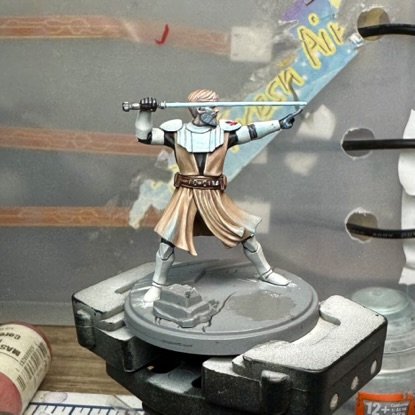
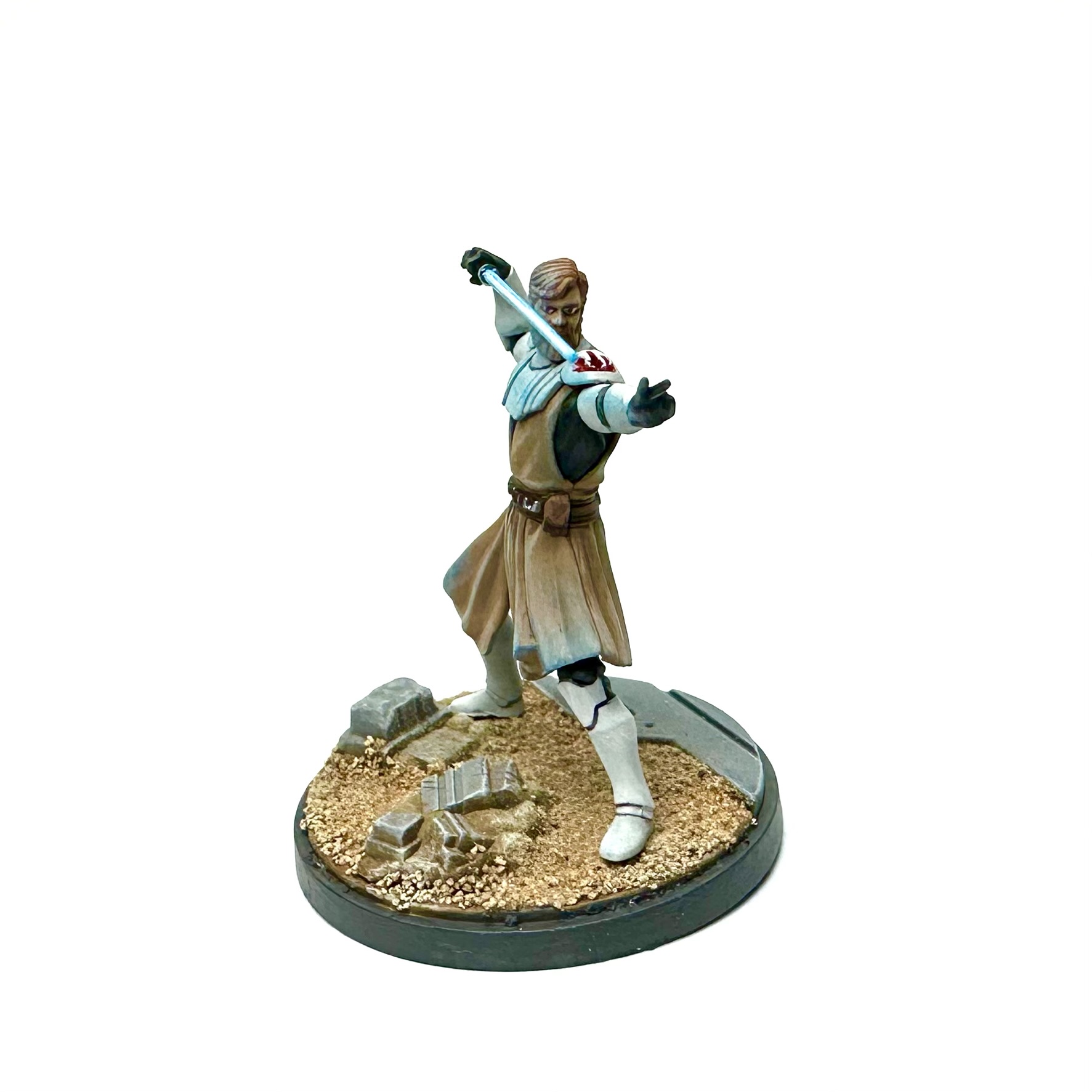
 RichyP's Method - Click to Expand
RichyP's Method - Click to Expand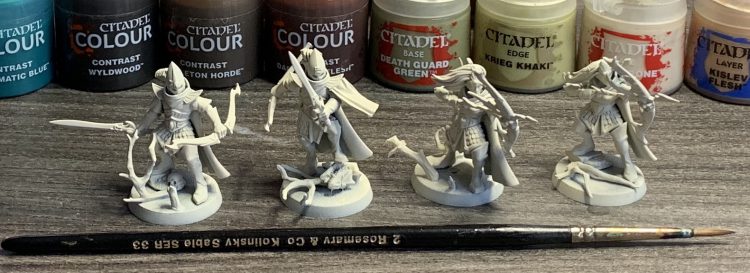
Step 1: Priming and Underpainting

Step 2: Contrast Paint
Step 3: Contrast OSL

Step 4: Highlights and Shadows
 Here’s a bonus of a full unit of ten in all their glowy Power Weapon glory.
Here’s a bonus of a full unit of ten in all their glowy Power Weapon glory. 
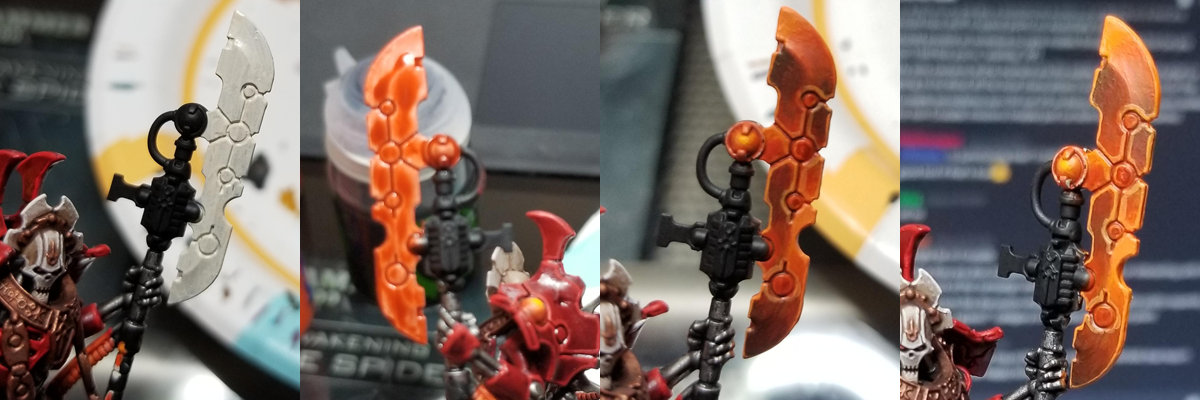 started by painting the blade with Wraithbone, then coating that in Contrast Gryph-Hound Orange. I didn’t love how that looked though so I ended up doing a few solid coats of Trollslayer Orange over that, and on later blades I just started with Trollslayer, which gave me a better effect. Next I shaded parts of the blade with Nuln Oil to create some obvious darker parts of the blade, doing the old standard “opposite lighting patterns” that frequently gets used on power weapons. Doing this in several layers and blending with Trollslayer gives you a brownish blade, so after that I started using thin coats of Contrast Gryph-Hound Orange, mixing it with Trollslayer, to coat the gradient parts and add saturation, giving a deeper orange hue. I shaded up a bit toward Fire Dragon Bright and used Fire Dragon to edge highlight the blade.
started by painting the blade with Wraithbone, then coating that in Contrast Gryph-Hound Orange. I didn’t love how that looked though so I ended up doing a few solid coats of Trollslayer Orange over that, and on later blades I just started with Trollslayer, which gave me a better effect. Next I shaded parts of the blade with Nuln Oil to create some obvious darker parts of the blade, doing the old standard “opposite lighting patterns” that frequently gets used on power weapons. Doing this in several layers and blending with Trollslayer gives you a brownish blade, so after that I started using thin coats of Contrast Gryph-Hound Orange, mixing it with Trollslayer, to coat the gradient parts and add saturation, giving a deeper orange hue. I shaded up a bit toward Fire Dragon Bright and used Fire Dragon to edge highlight the blade.
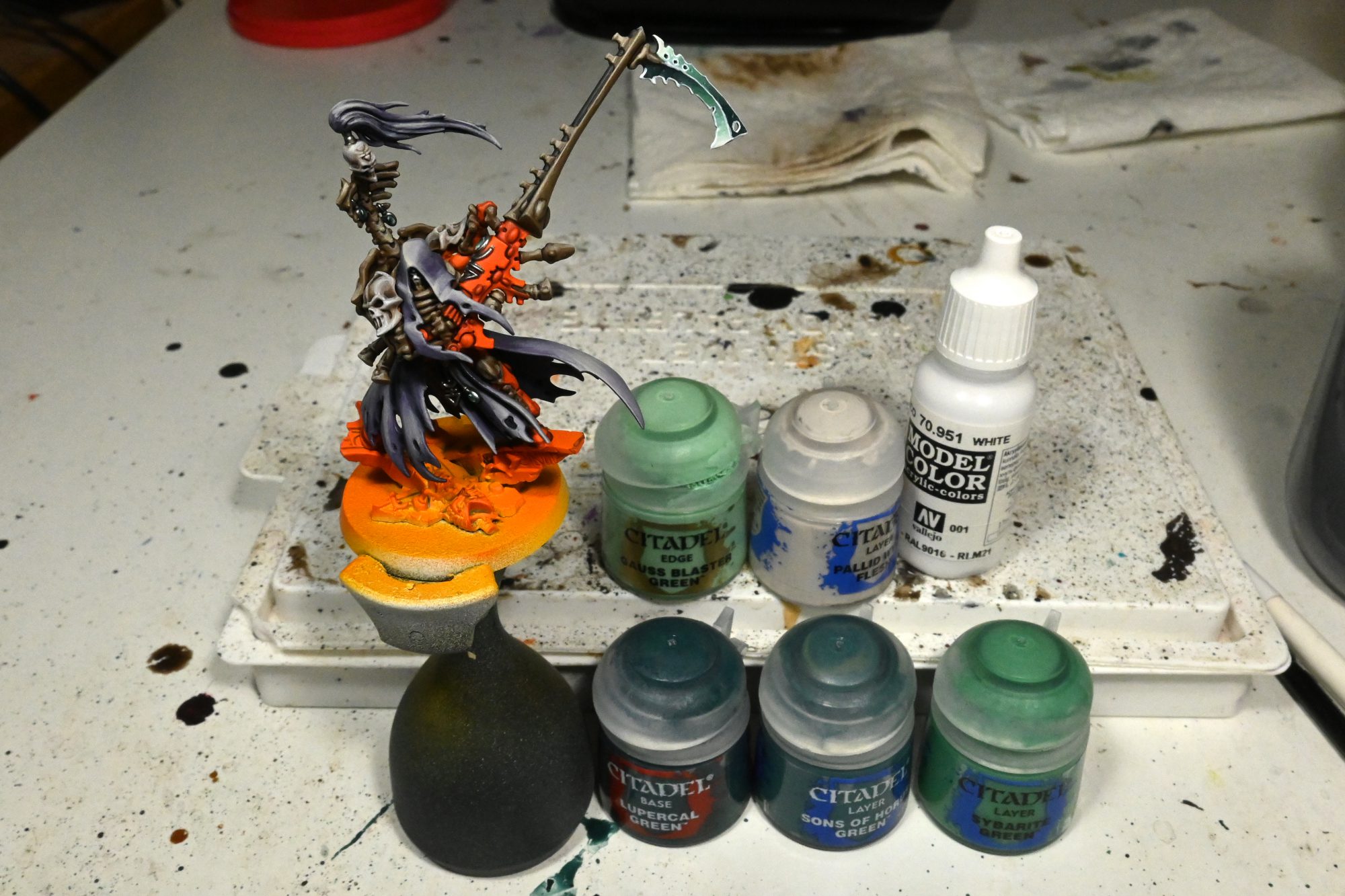
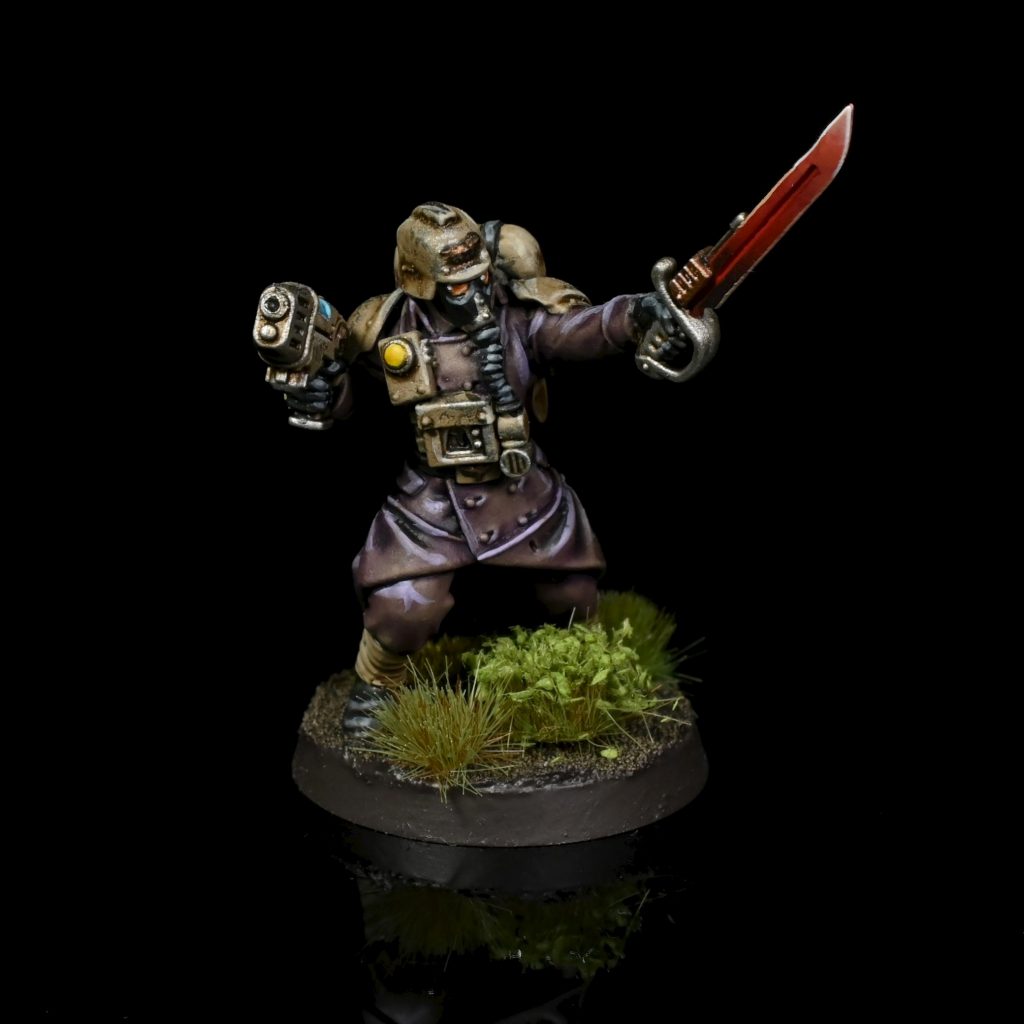
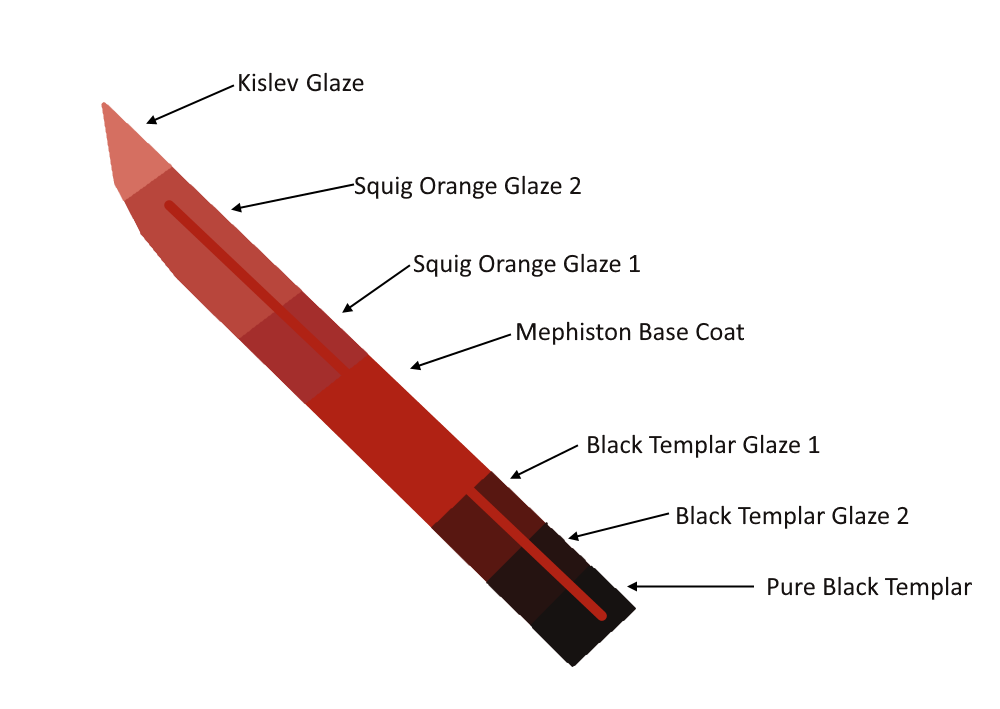
 Rockfish's Method (Purple) - Click to Expand
Rockfish's Method (Purple) - Click to Expand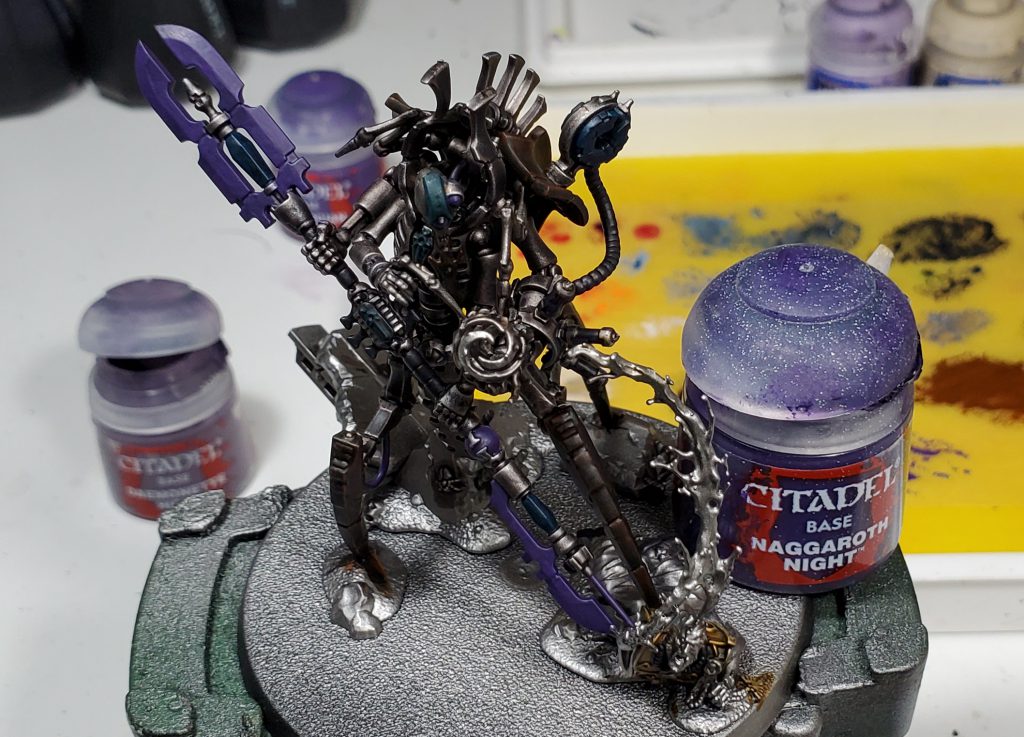 I started by blocking the blades in with Nagarroth Night. From there I’ll work up highlights using progressively lighter shades of purple, starting with Phoenecian Purple. This will involve multiple layers per shade, working inward progressively, as shown in the photos below.
I started by blocking the blades in with Nagarroth Night. From there I’ll work up highlights using progressively lighter shades of purple, starting with Phoenecian Purple. This will involve multiple layers per shade, working inward progressively, as shown in the photos below.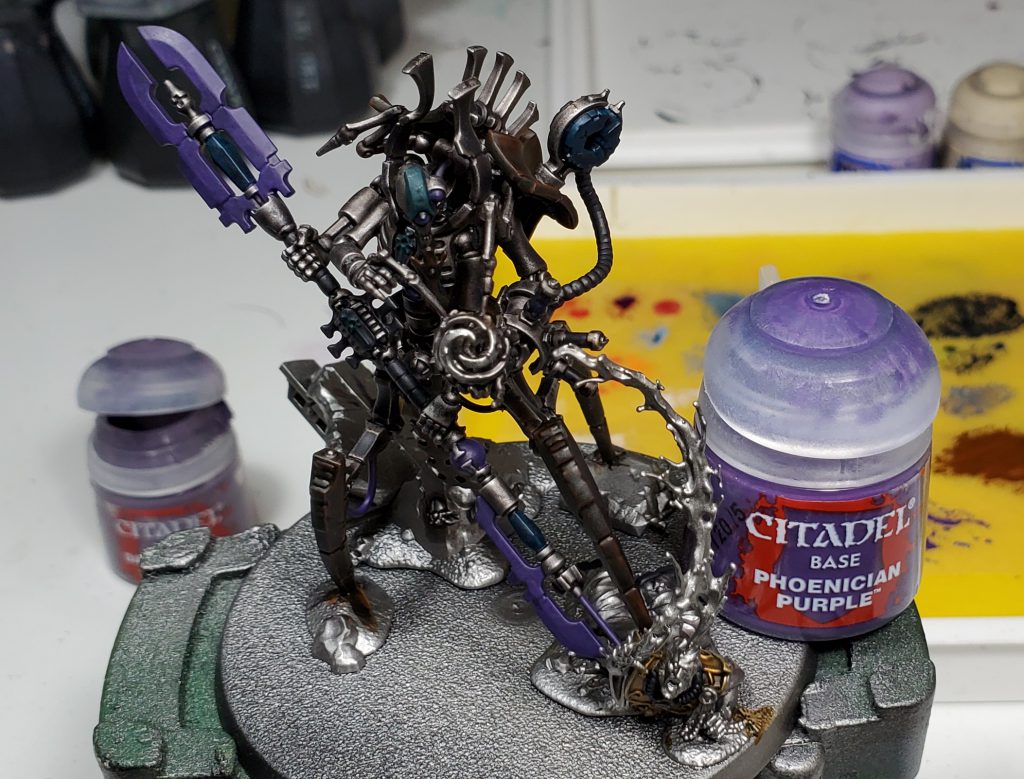 After Phoenician Purple I used Daemonette Hide.
After Phoenician Purple I used Daemonette Hide.
 In the final steps I highlighted with mixes of Dechala Lilac.
In the final steps I highlighted with mixes of Dechala Lilac. 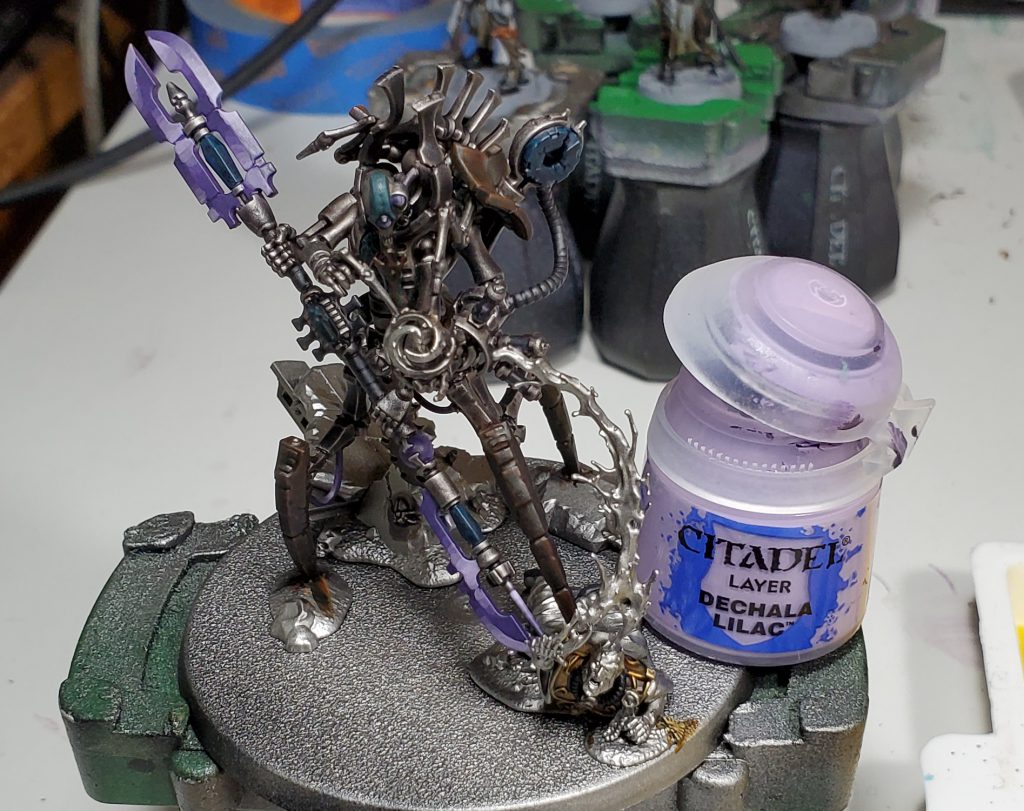
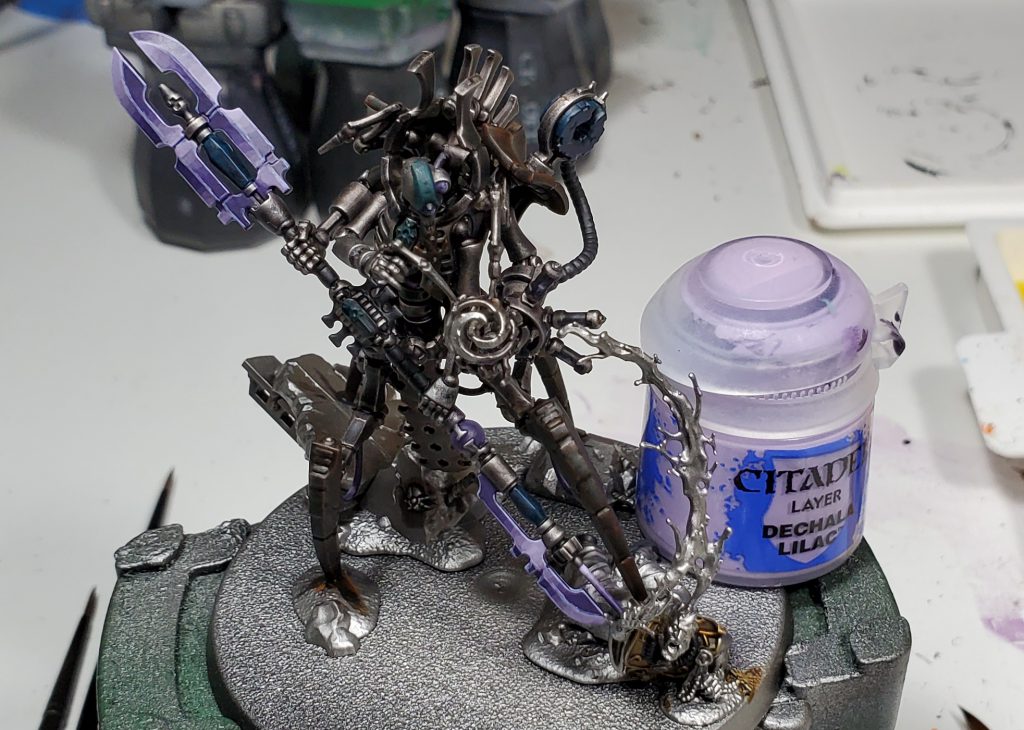
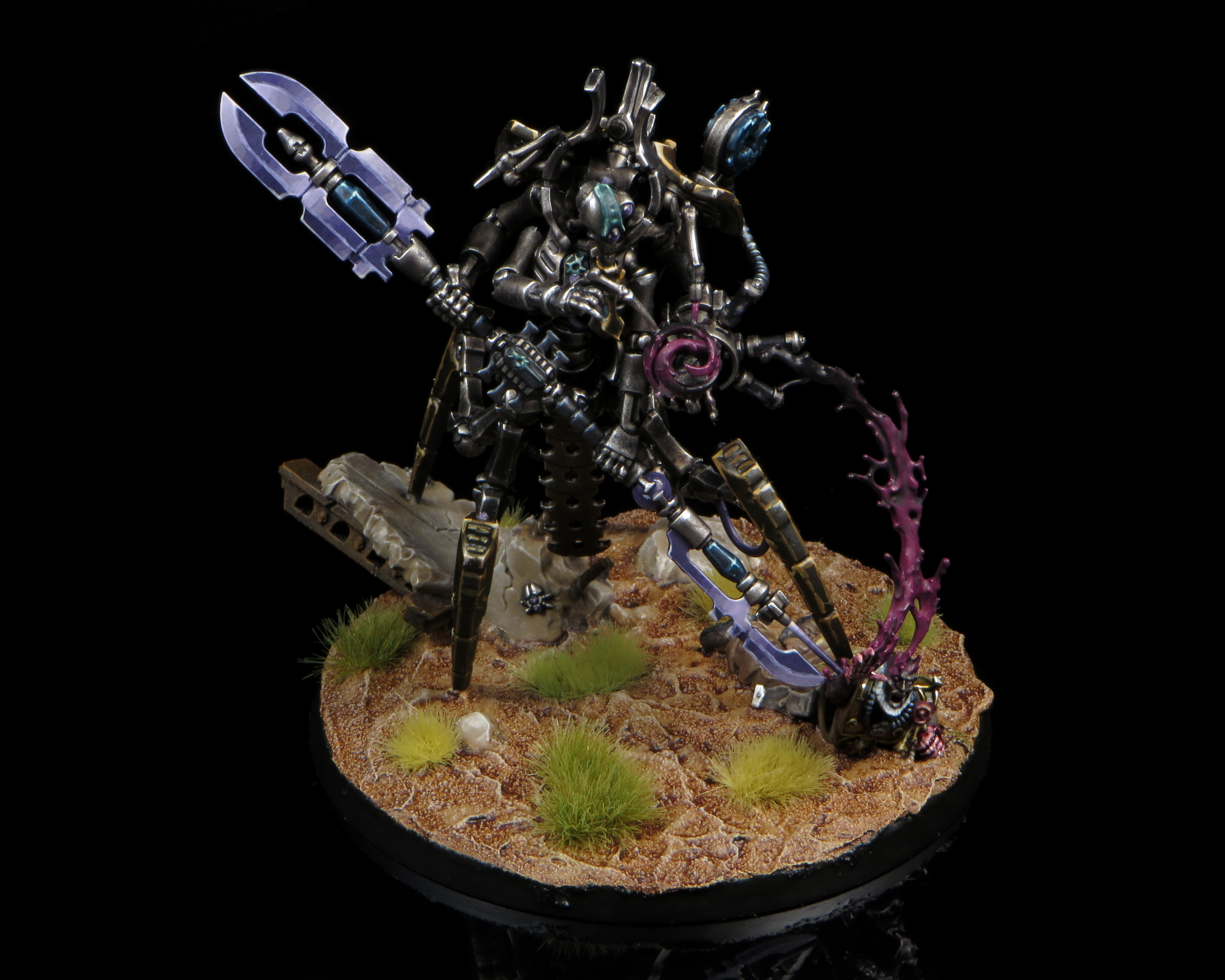
 Skails' Method - Click to Expand
Skails' Method - Click to ExpandStep 1: Initial Markings
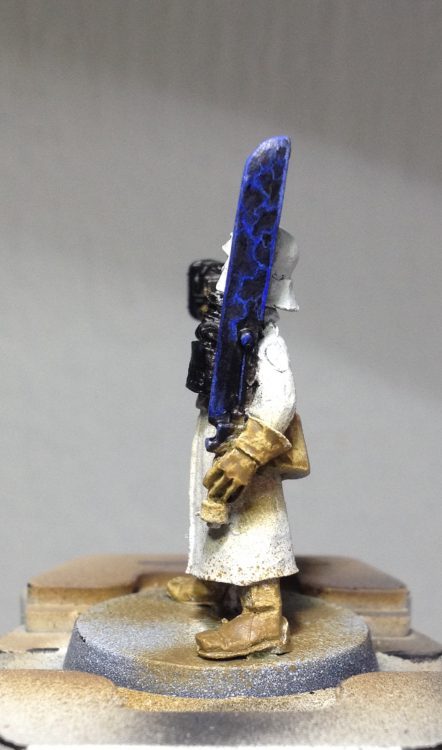
Step 2: First Highlights
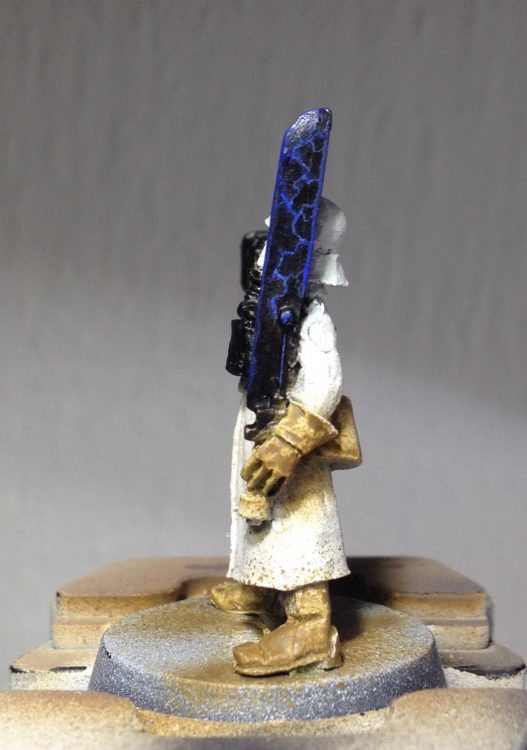
Step 3: Second Highlights Layer
Step 4: White Highlights
Additional Details
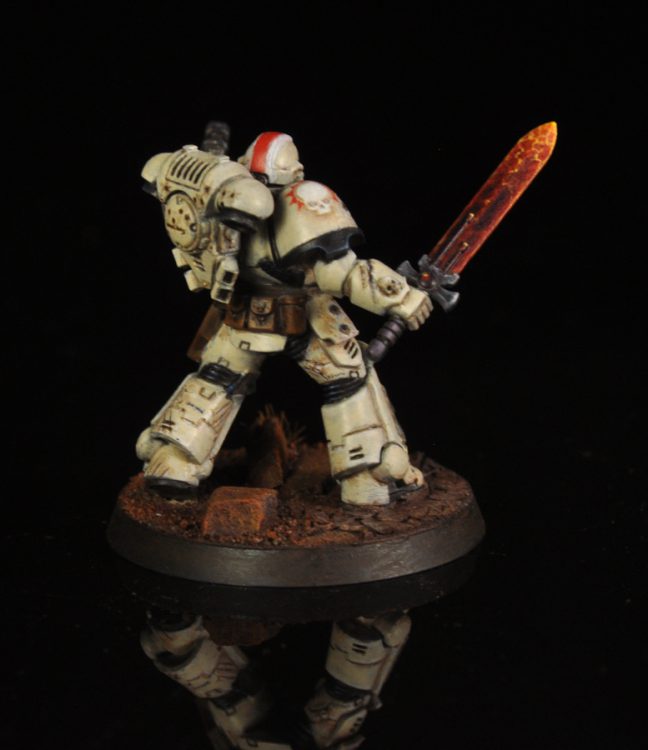

Final Thoughts
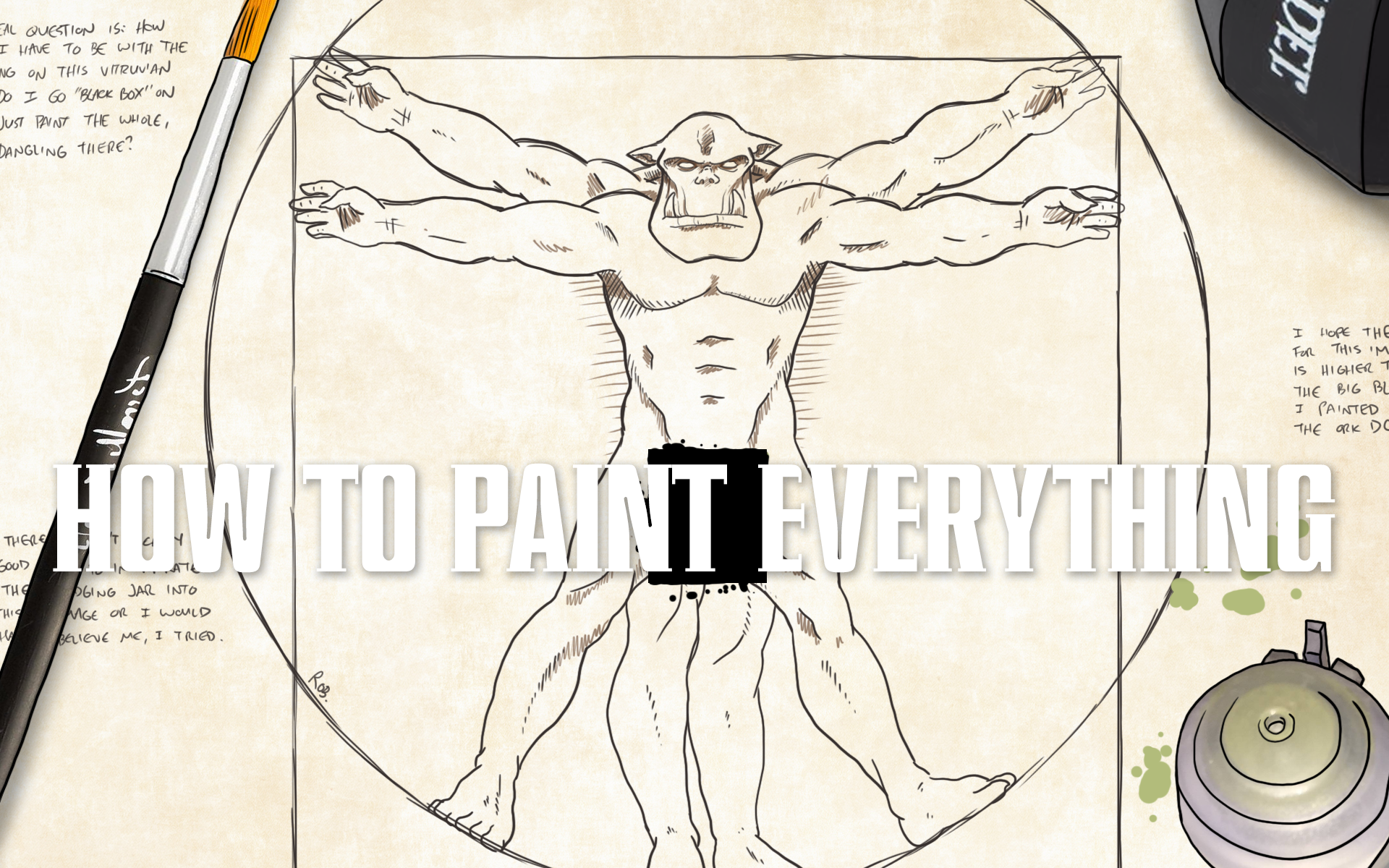





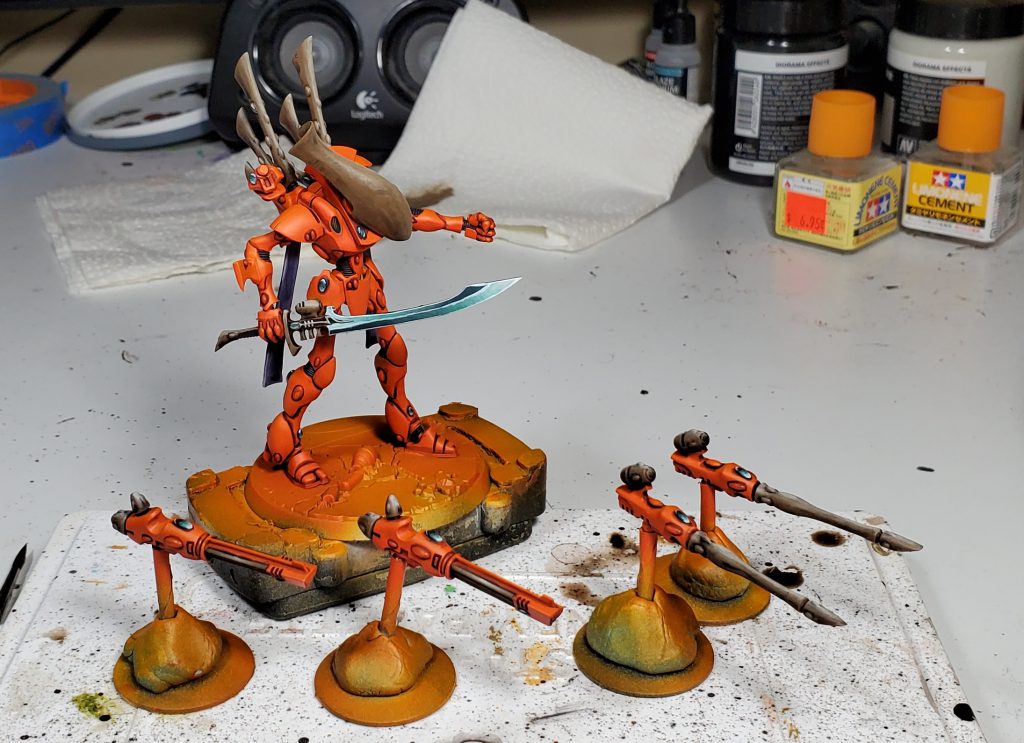

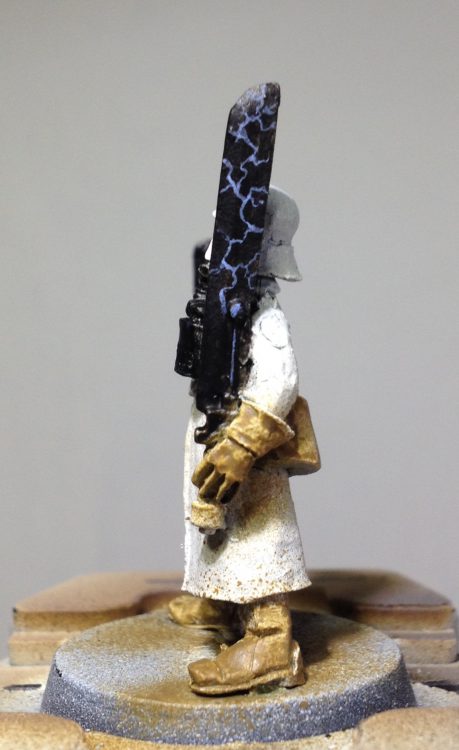





You must be logged in to post a comment.